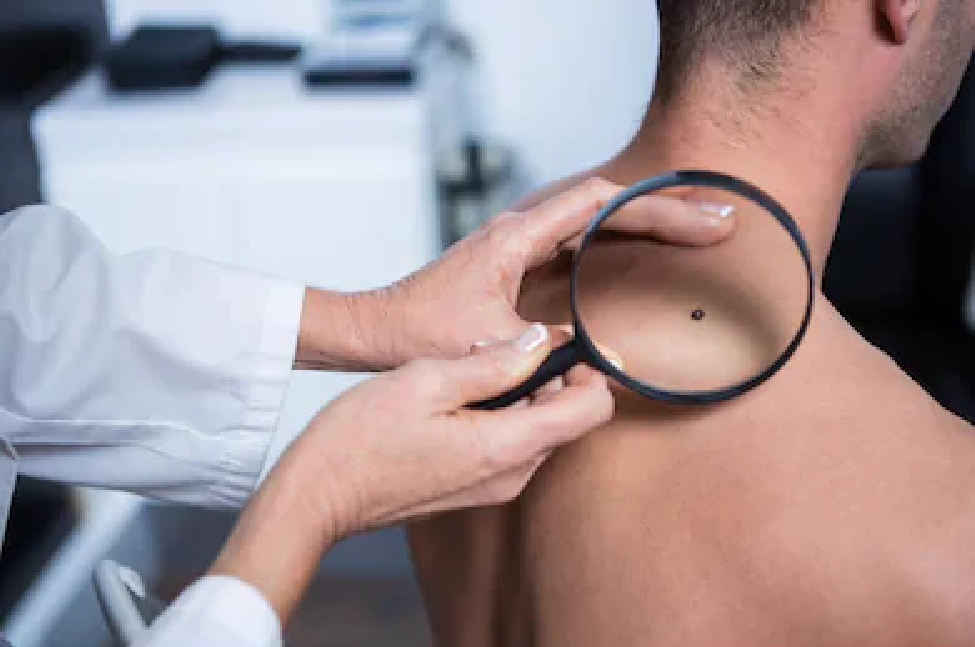We’ve now reached Autumn in Australia and reflecting on all the fun we had with our friends and family over summer! Beach days, barbeques, music concerts and of course work – we’ve all been exposed to the sun over the past few months.
The sad truth is, ‘Every five hours, one Australian dies from melanoma’ – melanomamarch.org.au (2020).
A melanoma is a type of skin cancer which usually occurs on parts of the body that have been overexposed to the sun. Rare melanomas can occur inside the eye or in parts of the skin or body that have never been exposed to the sun – cancer.org.au (2019).
What to look out for on your skin:
According to the Cancer Council (2019), often melanomas have no symptoms, however, the first sign is generally a change in an existing mole or the appearance of a new spot. These changes can include:
- Colour: a mole may change in colour, have different colour shades or become blotchy;
- Size: a mole may appear to get bigger;
- Shape: a mole may have an irregular border or may increase in height;
- Elevation: The mole may develop a raised area;
- Itching or bleeding:
Workplace Skin Checks – we can help you check your employee’s skin health by offering efficient, thorough on-site skin checks and education provided by trusted professionals.
Whether your employees work indoors or outdoors, workplace skin checks are a vital part of any health and wellness program.
Causes of a melanoma:
According to Cancer Council (2019), melanoma risk is increased with exposure to UV radiation from the sun or other sources such as solariums, particularly episodes of sunburn (especially during childhood).
Melanoma risk is increased in people who have:
- Unprotected sun exposure;
- A history of childhood tanning and sunburn;
- A pattern of short, intense periods of exposure to UV radiation;
- Increased number of unusual moles;
- Depressed immune systems;
- A family history of melanoma in a first degree relative;
- Fair skin, a tendency to burn rather than tan, freckles, light eye colour, light or red coloured hair;
- Had a previous melanoma or non-melanoma skin cancer;
Prevention:
How can your employees minimise their chances of obtaining a melanoma?
- Wear SPF30+ sunscreen;
- Avoid sunburn by minimising sun exposure when the UV Index exceeds 3 and especially in the middle of the day where UV levels are more intense;
- Seek shade where possible;
- Wear a hat that covers the head, neck and ears;
- Wear sun protective clothing and close-fitting sunglasses;
(Cancer Council, 2019)
Diagnosis for a melanoma:
If your employee notes a suspicious spot or mole on their skin, our doctors may examine using a magnifying instrument, using the ABCDE method:
- A – Asymmetry, irregular;
- B – Border, uneven;
- C – Colour;
- D – Diameter (usually over 6mm);
- E – Evolving (changing and growing);
If our doctor suspects a melanoma, your employee will be referred to their GP or otherwise they can visit our clinic for further testing.
What can you do to help reduce melanoma occurrence in Australia?
This month is ‘Melanoma March’, which is an annual campaign to raise awareness of skin health and prevention.
‘Melanoma is the third most common cancer in Australian men and women, and the most common cancer affecting 15-39-year-olds.’ – melanomamarch.org.au (2019).
Recent advances in treatment developed by clinicians and researches have tripled the life expectancy for advanced melanoma patients. If you choose to donate, your contribution will go towards further research and investigations to decrease the likelihood of this killer disease.
You can donate at Melanoma March or get your team together for a lunchtime event at work to raise the funds and awareness to promote a sun-safe lifestyle – https://melanomamarch.org.au/cms/mm-at-work-school
